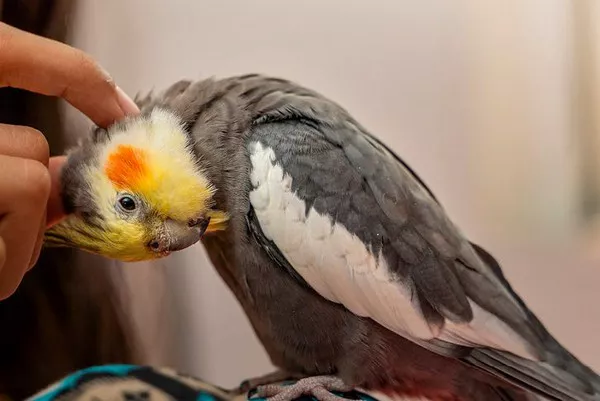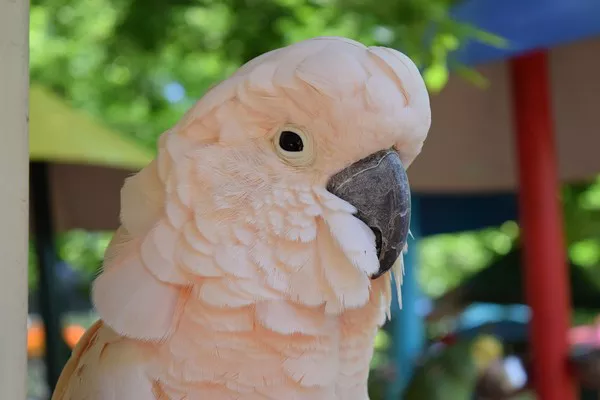When choosing a dog, the variety of breeds can be overwhelming, especially when two breeds, such as the pitbull and the hound, seem to have some similarities. These two groups of dogs, while both popular in the world of pets, have distinct characteristics, personalities, and histories that set them apart. Whether you are an experienced dog owner or a first-time pet parent, understanding these differences can help you make an informed decision about which dog might be the best fit for your family and lifestyle.
In this article, we’ll compare pitbulls and hounds in terms of their physical traits, temperaments, exercise needs, and more, to give you a better understanding of what makes each breed unique. Let’s take a deeper look at the history and characteristics of pitbulls and hounds to find out how they differ.
1. Understanding Pitbulls
The term “pitbull” is often used to describe a group of dog breeds that share certain characteristics, including the American Pit Bull Terrier, American Staffordshire Terrier, and the Staffordshire Bull Terrier. The name “pitbull” actually refers to a type of dog, not just one specific breed.
History of the Pitbull
Pitbulls have a somewhat controversial history, dating back to the early 19th century. They were initially bred for bull-baiting, a cruel practice where dogs were set against bulls in a fight. The dogs that performed well in this blood sport were then bred to create stronger and more determined dogs. Over time, however, the sport was outlawed, and pitbulls were eventually bred to be companion animals and working dogs, still retaining many of their physical traits, such as strength, courage, and determination.
Today, pitbulls are mostly kept as family pets, although they are still sometimes used for various tasks, such as hunting and guarding. They are often misunderstood due to their historical use in dog fighting, and many misconceptions surround their temperament and behavior.
Physical Characteristics
Pitbulls are muscular, powerful dogs that tend to have short coats, often in a variety of colors. They are medium-sized dogs, typically weighing between 30 to 85 pounds, depending on the specific breed within the pitbull category. They have broad heads, strong jaws, and well-defined muscles, which give them a stocky, athletic build.
Their physical appearance is often one of the reasons why pitbulls can be intimidating to some people. However, despite their strong and muscular appearance, pitbulls are generally friendly and affectionate when properly trained and socialized.
Temperament and Personality
Pitbulls are known for being loyal, affectionate, and energetic dogs. Despite their reputation, they are not inherently aggressive, especially if they are raised in a loving and safe environment. With proper socialization, pitbulls can get along with children and other pets, making them excellent family dogs. However, due to their history and strength, they require responsible ownership and firm, consistent training.
One of the key traits of a pitbull is their high energy level. These dogs need regular exercise to stay healthy and happy. A lack of physical activity can lead to behavioral problems, so daily walks, playtime, and mental stimulation are essential for pitbulls.
Exercise Needs
Because of their high energy levels, pitbulls require a good amount of physical exercise. Long walks, runs, and active play are ideal for this breed. Without proper exercise, pitbulls can become bored and restless, which can lead to destructive behaviors. Pitbulls are also intelligent dogs, and they enjoy engaging in activities that challenge their minds, such as obedience training and puzzle games.
Health Considerations
Pitbulls, like all breeds, have certain health considerations to be aware of. Common health issues in pitbulls include hip dysplasia, allergies, and heart conditions. Regular vet check-ups, a healthy diet, and consistent exercise are essential for keeping your pitbull in top shape.
2. Understanding Hounds
The term “hound” refers to a large group of dog breeds that were originally bred for hunting. Hounds are generally categorized into two main groups: scent hounds and sight hounds. Scent hounds, like the Bloodhound and Beagle, are known for their exceptional sense of smell, while sight hounds, like the Greyhound and Whippet, rely on their keen eyesight to track and chase prey.
History of Hounds
Hounds have a long history, dating back thousands of years. They were bred to assist hunters in tracking or chasing game, and different breeds of hounds were developed for different types of hunting. Some hounds were bred for tracking scents, while others were bred for chasing fast-moving prey.
Hounds were used by royalty and nobility for hunting during medieval times, and over time, they became popular among the general public as both working dogs and companion animals. While many hound breeds are still used for hunting today, they are also commonly kept as pets.
Physical Characteristics
Hounds come in various shapes and sizes, depending on the type of hound. Scent hounds, such as the Beagle, tend to have strong, muscular bodies with droopy ears and long noses, perfect for tracking scents. Sight hounds, like the Greyhound, have lean, athletic bodies built for speed and agility.
In general, hounds tend to be medium to large-sized dogs, and they can range in weight from 20 to 80 pounds. They often have short coats, although some breeds, like the Afghan Hound, have long, silky fur.
Temperament and Personality
Hounds are known for their independent, determined, and sometimes stubborn nature. Because they were originally bred for hunting, hounds have a strong prey drive and can be focused on following a scent or chasing after something that catches their attention. While they are often friendly and affectionate with their families, hounds can be more aloof with strangers compared to pitbulls.
Hounds, especially scent hounds, can sometimes be difficult to train due to their independent nature. They may not always respond well to commands, especially if they are distracted by a strong scent. Consistent, patient training methods are key to ensuring a well-behaved hound.
Exercise Needs
Hounds, like pitbulls, require regular exercise to stay healthy and happy. However, the type of exercise they need can vary depending on the breed. Sight hounds, such as Greyhounds, are known for their ability to run at high speeds, and they require plenty of space to stretch their legs. Scent hounds, like Beagles, enjoy long walks and may enjoy sniffing around during their outdoor adventures.
Due to their hunting background, many hounds enjoy following scents and may wander off if given the chance. It’s important to keep them on a leash or in a secure area during walks to prevent them from getting distracted and running off.
Health Considerations
Like pitbulls, hounds can be prone to certain health issues. Common health problems in hounds include hip dysplasia, ear infections (especially in breeds with floppy ears), and eye conditions. Regular veterinary check-ups, proper nutrition, and exercise are important for maintaining a hound’s health.
3. Key Differences Between Pitbulls and Hounds
While both pitbulls and hounds make wonderful pets, there are several important differences between the two. These differences primarily relate to their history, physical traits, temperament, and exercise needs. Here’s a summary of the key distinctions:
1. Purpose and History
Pitbulls: Originally bred for bull-baiting and later as working dogs, pitbulls were developed to be strong, determined, and versatile.
Hounds: Hounds were bred for hunting, either for tracking prey (scent hounds) or chasing it down (sight hounds). They have a long history as hunting companions.
2. Physical Traits
Pitbulls: Muscular, stocky, and strong with broad heads and short coats. They are generally medium-sized dogs.
Hounds: Vary widely in size and appearance, but they typically have long ears, droopy eyes, and a lean or muscular build. Scent hounds have strong noses, while sight hounds are built for speed.
3. Temperament
Pitbulls: Known for their loyalty, affection, and high energy. They tend to be friendly with families and require strong socialization.
Hounds: Independent, determined, and sometimes stubborn. They are generally good with families but may be less responsive to training due to their independent nature.
4. Exercise Needs
Pitbulls: Require regular exercise to burn off energy. Daily walks, runs, and playtime are necessary.
Hounds: Also need regular exercise, but their needs depend on the type of hound. Sight hounds need space to run, while scent hounds enjoy long walks and sniffing.
5. Health Considerations
Pitbulls: Prone to hip dysplasia, allergies, and heart conditions.
Hounds: Prone to hip dysplasia, ear infections, and eye issues.
Conclusion
In conclusion, both pitbulls and hounds make excellent pets, but they cater to different types of dog owners due to their distinct histories, physical traits, temperaments, and exercise needs. Pitbulls, known for their strength, loyalty, and affectionate nature, are ideal for families seeking an energetic and social dog that thrives on attention and activity. On the other hand, hounds, with their independent and determined personalities, are better suited for those who appreciate a more laid-back, yet active companion that enjoys outdoor adventures and follows its instincts.
When choosing between a pitbull and a hound, it’s essential to consider your lifestyle, exercise commitment, and training abilities. Both breeds require responsible ownership and consistent care to thrive, but with the right environment, both can be loyal, loving members of your family. Whether you opt for the playful pitbull or the adventurous hound, the key is understanding their unique characteristics and providing them with the love, attention, and training they need to lead happy and healthy lives.
Related Topics:





















